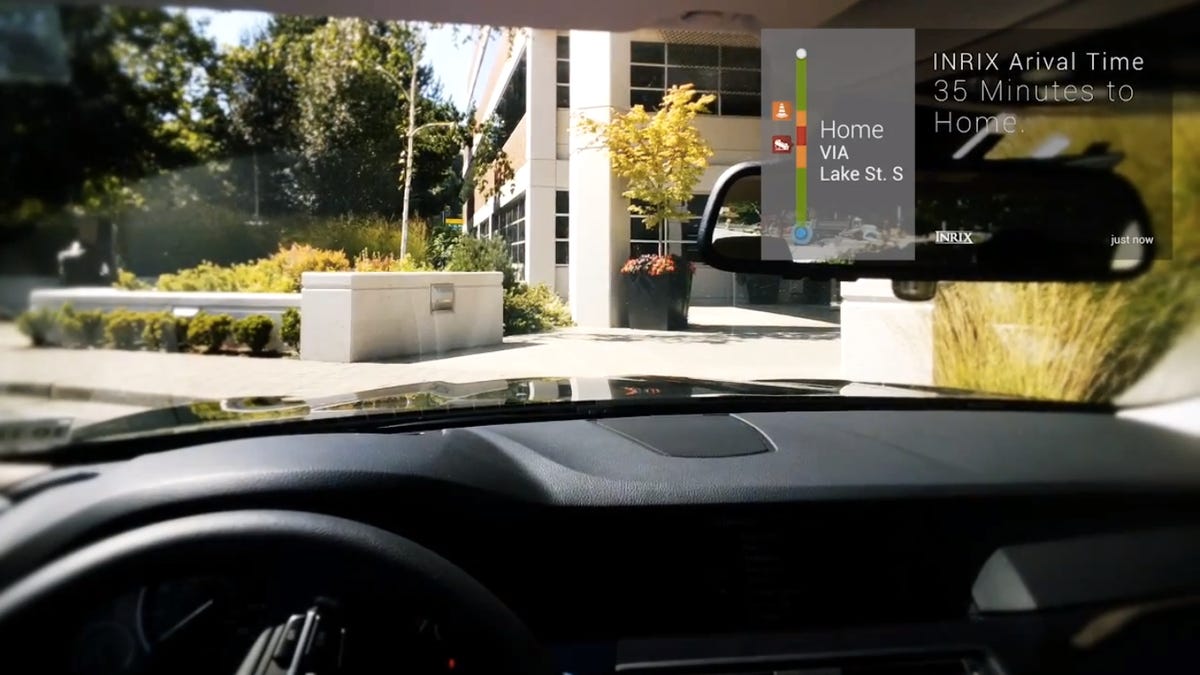Inrix Traffic demos Google Glass as a HUD in the car
The traffic data provider's concept Glassware gets us thinking about how Google Glass can be safely used while driving.

Lately there's been a lot of hubbub about the use of head-up displays (HUDs) to increase safety by helping drivers to keep their eyes on the road while driving and navigating. Inrix, provider of traffic data and services, is also working on getting into the HUD business, but instead of projecting relevant information onto the vehicle's windshield, it's demonstrating a concept that makes use of Google Glass to float traffic data before the driver's very eyes.
Pulling features from the latest version of its smartphone app for iOS and Android devices, Inrix's Google Glassware concept would allow drivers wearing Glass to get automatic and unobtrusive notifications of congestion or incidents on the road ahead with options to cue up an alternate route around the traffic with simple voice commands.
Of course, in its current incarnation, Inrix doesn't provide turn-by-turn directions, so that alternate route suggestion would probably be something along the lines of, "Take the San Mateo Bridge instead of the SF-Oakland Bay Bridge on your way home today," leaving the actual business of routing to the driver.
Also using voice commands, users would be able to notify any friends or family members stored in their Google contacts of their current ETA by just using a command like, "OK, Glass, send my Irix ETA to Wayne." These messages would be sent via the Glass-associated account in Gmail or Google Hangouts.
If the driver runs into or witnesses a traffic incident that's not been reported on Inrix's network, he or she could snap a quick photo of that incident and send the report to Inrix and other Inrix users by saying "Send Inrix a report." This bypasses one of my biggest annoyances with crowdsourced traffic reporting, which is that contributing specific incident data usually takes too many screen taps.
When the driver ends the trip, the Glass app would display a summary of the trip that would also let show how much time was saved over the driver's average commute time by avoiding traffic with Inrix.
The concept is pretty cool and seems safer than you might think; Inrix representatives stopped by CNET's offices recently and demonstrated what these notifications would look and sound like and I'm happy to report that they are, in fact, remarkably unobtrusive. There are few animations, simple graphics, and very few words displayed on Glass while using the Inrix app. Most of the interactions between the driver and the app are by voice command or spoken by the app using Glass' bone-conducting speaker.
However, if Inrix actually provided an option for turn-by-turn directions alongside its traffic data and route suggestions, I'd be even more excited about this specific concept. When pressed on the subject, Inrix simply told me to "stay tuned."
That said, Inrix's demo got my mind working about ways that I'd like to see the Google Glass and augmented-reality technology implemented in cars.

